- Home
- Neal Asher
Polity Agent Page 2
Polity Agent Read online
Page 2
The rim engines were of an old design fuelled by deuterium and tritium microspheres. Their tanks were full of liquid deuterium and tritium talc, and had been so for a hundred years. Diagnostics detected no faults, therefore this particular engine stood ready to ignite, but not yet. The Celedon station possessed a slight spin, not for centrifugal gravity, that problem having been overcome long ago with gravplates, but to fling away any docked spacecraft – though the last one of those had departed thirteen years ago. Checking with an astrogation program, the controlling AI, Celedon, waited the required twenty-two minutes and seven seconds.
Now.
Deuterium droplets sprayed into the freezer chamber, where they froze, and next were electrostatically coated with tritium dust. A ring of injectors then fired the resultant microspheres into the main chamber. Once a sphere reached the chamber’s centre, it was captured in a twenty tesla magnetic bottle, then briefly enclosed in a hardfield case, open on one side and with just enough gaps in it to allow access for the beams of high-intensity stacked gallium-arsenide lasers. The lasers fired, igniting fusion, then this process repeated a hundredth of a second later, and kept on repeating. The resultant helium plasma contained less than .00001 isotope contamination, but was still dangerously destructive.
White fire stabbed out of the open side of the hard-field box, and then out of the layered ceramo-carbide combustion chamber. It cut through rooms previously occupied, converted walls, floors, ceilings, coffee tables and sofas to incandescent gas, and blasted out into vacuum. Spearing out from the station edge, it burned red-orange. Air exploded into space, wreckage followed. The conglomeration of structures peeled away, burst asunder, was flung away by the station’s spin. Celedon noted fire alarms and systems coming online, and going off just as quickly as they collapsed. And then Celedon, the station, slowly began to tilt.
Shutdown.
The fire went out. In two hours’ time a stabilizing burn would be required from rim engine 4, which gave the Golem plenty of time to clear out the last sixty people still within its vicinity. Gazing internally Celedon observed the outlinkers releasing themselves from wall-holds after acceleration ceased. They had not liked that sensation at all, but it made them move much faster towards Runcible A.
Celedon separated out one of the many communications sent to it and replied ‘Forty-seven hours’ to Draesil’s query. Shaking his head in annoyance, the man himself followed a group of outlinker children through the runcible.
Two hours later, the AI initiated the stabilizing burn. The station now pointed directly at what was, by a very roundabout route, its intended destination. Forty-five hours after that, with the station finally emptied of fragile organic life, Celedon turned on the main fusion engine, and shed the accretions on the station’s surface like an old skin. Then, after a three-hour burn followed by a shutdown, the AI again used the rim engines to adjust the station’s attitude before reigniting the main drive. Now, rather than pursue a long curving roundabout route to the destination sun, the station took the most direct route possible taking into account its original velocity. The journey commencing would take three years, but this would not matter to the original sender of the information package. For once Celedon initiated full connection to the sending runcible, the time there, in the future, would not have changed at all.
Deuterium and tritium canisters arrived through Runcible D and the skeletal Golem manhandled them to the monorail train, out of which they had already torn all the furnishings to convert it into a fuel transporter. While they ran this extra fuel down to the main engine, Celedon watched through the eyes of the hundreds of maintenance robots swarming in the sector of the station containing Runcible A. That sector, shaped like a wedge with the tip cut off, was originally devised to be ejected from the station in the event of catastrophic runcible failure. However, over the years, bulkheads had been removed, doors added, its internal structure changed. Supervised by Arach, robots brought out sheets of ceramal-laminated composite from a factory located in the central spindle, to deliver to other robots who powder-welded them into place. Still other robots cut through any structural members Celedon calculated to be unnecessary, leaving only those necessary under the five-G deceleration down towards the green sun. To those remaining structural members holding the sector to the station, Celedon sent Fly to attach planar explosives. These bombs would generate a disc-like explosion which would sever the retaining members nicely.
‘The Jerusalem will be joining you in seventy-three days,’ Earth Central informed the AI abruptly.
‘Should I wait?’ Celedon enquired. ‘I’m only fifty-one days away from achieving low solar orbit.’
‘You should indeed wait. This will give you time to complete your preparations.’
‘My preparations will be completed by the time I achieve low solar orbit.’
‘No they will not,’ EC replied, and followed that pronouncement with an information package.
Celedon scanned the package, learning only now about certain recent events in the Polity and the Jerusalem AI’s involvement in them. Necessarily it both reviewed and looked towards updating many security procedures. Ejecting the A sector of the station was just part of this adjusted hostile contact protocol. The original package had made it aware it must prepare itself for the possibility of attack by Jain technology – a particularly nasty subversive technology left lying around by a long-dead alien race – but now this extra information made it realize precisely what that could mean. As much as an AI could be, Celedon was scared.
First the A sector: station spin alone would not be enough to eject it fast enough. After Fly finished placing the planar explosives, Celedon sent the drone to place other explosives around the inner spindle bulkhead. Once the sector detached, these too could be detonated. The air from inside the sector would then blast out, driving it even further from the station. Fortunately this sector also had a rim motor, which was self-contained but for the controlling optic feed. Fly severed that feed and installed a module to enable that motor to be activated by radio.
‘So I must accept the possibility of Jain-controlled humans?’ Celedon idly asked EC.
‘You must, so take what precautions you can.’
Celedon allowed itself the equivalent of a wince. Doubtless Jerusalem would deal with the problem, should Jain technology board the station via that route. The station, and Celedon itself, would certainly not survive the experience.
The corridor running directly from the runcible, through an airlock into sector B, was already ready. Celedon therefore directed Fly and a hundred Golem to start building an isolation area in B. Necessarily, the surrounding areas were hardened to worm and viral attack, so the AI’s only access would be via narrow-band voice and video transmission routed through five relays, all of them outside the station, all of them rigged for detonation, and targeted by masers on the rim. Sector A, however, the AI now isolated but for its link to Arach, and to runcible control, which was utterly necessary. The AI felt that the risk of Jain subversion of itself through the former communications route to be outweighed by the inherent risks of not knowing what was going on. The safest option, of course, would be to not allow initiation of any full transmission from that future runcible. But Earth Central commanded and Celedon obeyed. Obviously, further vital information might become available from that transmission.
Fifty-one days later, Celedon fell into orbit around the green sun, some distance inside the orbit of its one Venusian planet. As the temperature climbed, the station’s AI routed heat through superconducting cables to thermal generators on its dark side, where gas lasers then emitted it into vacuum. On the sixtieth day a solar flare arched below, and the side of the station turned to the sun became too radioactive to support human life. But the AI had foreseen this possibility. The A sector, containing Runcible A, now lay away from the solar furnace, and would only be turned towards it at the last possible moment. Precisely on time, on the seventy-third day, Celedon detected a U-space disturbance a million miles out
in space, as the titanic Jerusalem folded into existence: a spherical research vessel three miles in diameter with a thick band around its equator containing everything from legions of robotic probes up to U-space tugs and grabships, and weapons.
‘Arach, you will remain by the runcible. When the evacuees come through, take them immediately to Isolation in B,’ said Celedon.
‘Great, thanks,’ said the spider-drone.
‘Jerusalem?’ Celedon sent.
‘Whenever you are ready,’ replied the AI in the massive ship.
Low energy ion motors on the rim set the station turning. Celedon initiated connection to the source coordinates of the original information package, and routed power into the runcible’s spoon. The Skaidon warp extended, tentatively linked, then made full connection. Suddenly the drain on the station grew huge: more power required, then even more. Shutting down the lasers, Celedon routed through power from the thermal generators. It then began shutting down other systems and rerouting additional power from the station’s many fusion and fission reactors.
‘It seems there is also a direct thermal drain,’ Celedon observed.
Between the bull’s horns of the runcible, the warp turned blank white, and from it cold propagated throughout the station. Frost crystals feathered across the floor and up the walls.
‘Yes, as expected,’ Jerusalem replied.
‘Entropy?’ Celedon suggested. ‘This link to the future a definite confirmation of the universal slide into lower energy states?’
‘No, a confirmation of the vast energy requirement of this runcible link. It is already out of control, and the phenomenon is localized but dispersed. Observe the planet. Observe the sun itself.’
Celedon focused various instruments where directed. The planet, a blue sphere, was now striated with lines of red cloud. Thermal analysis revealed that its entire surface temperature had dropped one degree. In the surface of the sun, directly below where the station orbited, a black spot formed and spread.
‘Ah, hence the hostile contact protocol Starfire?’ Celedon suggested.
‘The hostile will most certainly try to keep the gate open, and certainly try to acquire the technology surrounding it. We will close this gate, severing the link, and the energy will have to go somewhere.’
‘Erm . . . how localized is this phenomenon?’
‘The radius of the sphere of influence from each runcible extends for the spacial distance between them. The energy drain drops in a near-to-straight line to zero from centre to circumference.’
Celedon could only make an estimate based on the entropic effects on nearby objects – the sun, the planet – and the result it came up with appalled it. This was why, even though AIs knew how to make a time-inconsistent runcible link, they pretended otherwise. The energy requirement increased exponentially and could not be controlled. The link drained energy directly from the space around each runcible gate, and would keep on doing so until surrounded by dead worlds and dead suns. Shutting down such a link resulted in all the absorbed energy exploding from one gate – the one still open, since it was impossible to close them both at the same instant – in the form of a blast wave of subatomic particles forced from the quantum foam. The mathematics involved was esoteric even for AIs, but they calculated that closing such a link, formed between planets ten light years apart with a time inconsistency of a year, even after only a few seconds, could result in the obliteration of one of the gate worlds, and the fatal irradiation of all life within a sphere of nearly a light year. These two gates lay 150,000 light years apart, the time-inconsistency at 830 years, and now the gate had been open for three seconds. And people came through.
Celedon observed, via runcible control, five humans falling through the Skaidon warp, then another five, then another three. There should be another forty-seven humans – and one other. Through Arach’s senses, the AI studied the humans. They bore no visible sign of Jain infestation. Five of them wore the overalls favoured by runcible technicians; there was a four-person Sparkind team, two human and two Golem; the rest obviously civilian scientists, diplomats and crew, all augmented, some of them to haiman level, which meant they were both human and AI. They were all armed, their clothing dirty and ash-smeared. One of the haimans carried a large lozenge of crystal encaged in black metal – probably the AI Victoria from the ship of that name on which they had been passengers.
‘That’s all of us, shut it down as soon as you can!’ shouted one of the overalled figures – a woman with wide green eyes, cropped dark hair and skin as black as obsidian. Celedon identified her as Chaline Tazer Irand, the technician in charge of setting up the runcible in the Small Magellanic Cloud, 830 years in the future.
‘Where are the others?’ Celedon asked through Arach, as that drone shepherded these people towards Isolation.
‘Dead,’ the woman replied, her face exhausted of expression. ‘At least I hope so.’
‘The Maker?’
‘He wants to die with his kind,’ she told him tightly.
Now something else tried to come through. Celedon denied it permission, it being nothing the AI recognized – neither human nor Maker – and tried to shut down the runcible. In response to this, a deluge of information packages came through the gate, many of them opening automatically, and the gate simply would not shut down. Despite the precautions it had taken, the AI saw it could not hold out against this attack. Wormish fragments of code spilled into the gate’s processing spaces and began attempting to assemble.
‘Jerusalem?’
‘Are you asking for permission?’ the other AI enquired. ‘You know what to do.’
Though couched in verbal terms, this communication lasted only a fraction of a second. Long seconds dragged thereafter as the AI waited until the evacuees reached the quarantine airlock and bulkhead doors closed behind them. This gave the attacker enough time to subvert the systems controlling gate maintenance and diagnostics. Since a selection of robots, ranging from the nanoscopic up to ones the size of termites, carried out internal maintenance, this meant the attacker now controlled physical resources. Time for Starfire.
The planar explosives detonated as one, severing thousands of structural members. The slow spin of the station caused sector A to part company with it. The sector tore out the s-con and optic cables linking Celedon to the runcible, but in the last few seconds the AI lost control of it anyway. A radio signal detonated the next explosives, taking out the spindle-side bulkheads. Air blasted out into space. Debris and ice crystals reflected the green light of the sun. The station shuddered, that one severed segment departing it like a slice from a cake.
As calculated, the segment began to turn. Transmissions now came from it – viral attacks on the station itself. Celedon immediately shut down all its subminds, and anything else that might be vulnerable to subversion. Keeping only a few hardened cameras pointed at the departing object, the AI waited until it turned nose down to the sun, then sent the signal to start its rim fusion engine. Helium plasma briefly washed over the station as the parted segment accelerated down into the gravity well. Then it shuddered. Whatever had been trying to get through the runcible was now inside. Minutes passed, then there seemed movement on the surface. Focusing, the AI observed bright writhing objects breaking through the outer skin. As pieces began to break away, Celedon fried them with masers. The segment’s new occupant realized its danger and swiftly shut down the drive, but the segment lay deep into the sun’s gravity well now, and metal began to ablate away from it as the sun’s heat impacted. Finally it plunged into the furnace right beside the black spot. A U-space signature denatured. There came a burst of Hawking radiation as that run cible went out.
‘Observe,’ said Jerusalem, the moment Celedon reinstated coms.
From the point of impact a pattern of hexagons began to spread. It held definition for a while, then began to break apart, and finally disappeared. Celedon surveyed the damage to its station, its body, then ignited one of the remaining rim engines to pull
itself away from the sun. The damage was severe, but a mere mote compared to what must have happened at the other runcible involved.
‘In eight hundred and thirty years,’ Jerusalem said, ‘and a hundred and fifty thousand light years away from here, there will be an explosion of such magnitude it will cause a chain reaction between close suns. The Small Magellanic Cloud will probably be sterilized of all life, and probably most other forms of self-organizing matter, as was the intention.’
‘Jain technology.’
‘Yes, precisely. Of course we will not see the light for a very long time.’
1
Earth Central Security and the AIs are parsimonious in supplying the details, but I now know that one Skellor – a biophysicist with terrorist Separatist affiliations – did somehow manage to obtain a Jain node. I will be brief here with the salient details, since I don’t know how much time I have before ECS gags me.
Aware of the node’s dangers, Skellor settled down to study it in a secret Separatist base, trying to discover how to control the resultant technology in a way safe for the host. His eventual solution was to use a crystal-matrix AI augmentation – death would be the result of a human direct-linked to such, but the Jain tech could support human life in this situation while through the aug the human could exercise strict control over that technology. However, before he finished his researches, it was a solution he was forced to use untested when ECS agents came to capture him.
Evading them on the ground, Skellor managed to board their dreadnought Occam Razor, kill its AI, and use Jain technology to seize control while the ship was in transit. He killed most aboard, but the agents themselves escaped the ship, fleeing to the out-Polity world of Masada. Skellor could not allow knowledge of what he had become to reach the Polity, so he pursued them, intent on killing all witnesses. At Masada he burnt out a cylinder world, mentally enslaved thousands, killed tens of thousands, and came close to rendering that entire world to ash. But again the agents escaped him, leading him into a trap at the smelting station of Elysium, where giant sun mirrors were used to destroy the Occam Razor.

 The Bosch: A Novella (Polity Universe)
The Bosch: A Novella (Polity Universe)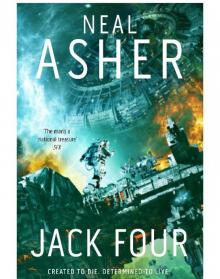 Jack Four
Jack Four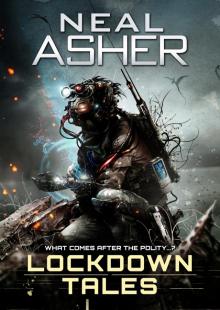 Lockdown Tales
Lockdown Tales The Warship
The Warship Line War
Line War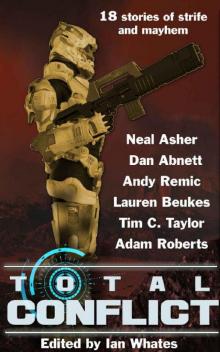 Total Conflict
Total Conflict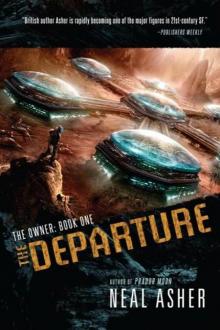 The Departure
The Departure Owner 03 - Jupiter War
Owner 03 - Jupiter War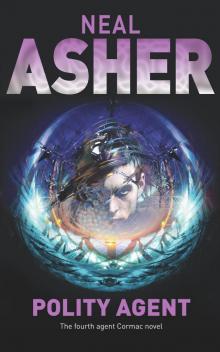 Polity Agent
Polity Agent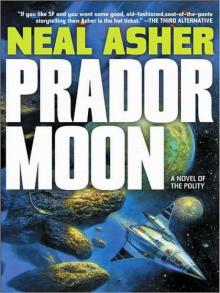 Prador Moon
Prador Moon The Technician
The Technician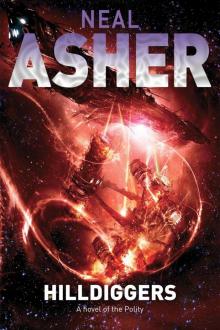 Hilldiggers
Hilldiggers Gridlinked
Gridlinked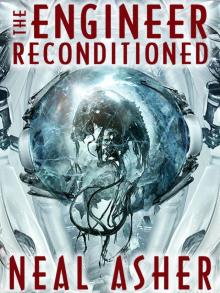 The Engineer ReConditioned
The Engineer ReConditioned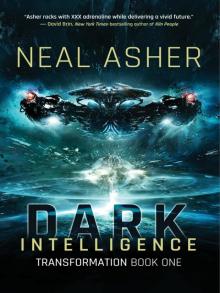 Dark Intelligence
Dark Intelligence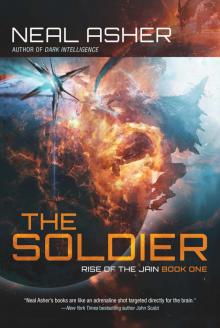 The Soldier: Rise of the Jain, Book One
The Soldier: Rise of the Jain, Book One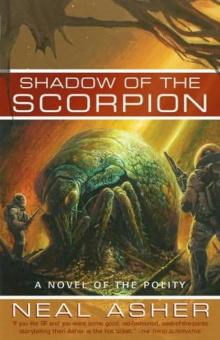 Shadow of the Scorpion p-2
Shadow of the Scorpion p-2 The Skinner
The Skinner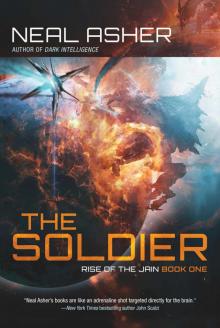 The Soldier
The Soldier The Gabble p-13
The Gabble p-13 The Gabble and Other Stories
The Gabble and Other Stories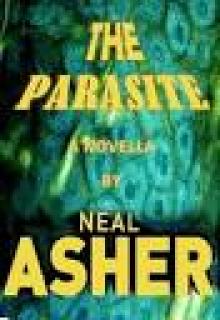 The Parasite
The Parasite The Other Gun
The Other Gun The Line of Polity
The Line of Polity Zero Point (Owner Trilogy 2)
Zero Point (Owner Trilogy 2)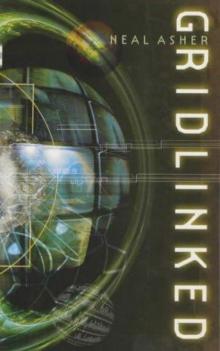 Gridlinked ac-1
Gridlinked ac-1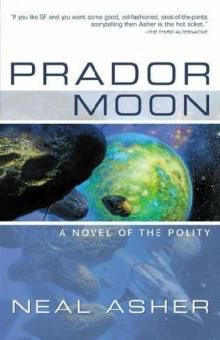 Prador Moon p-1
Prador Moon p-1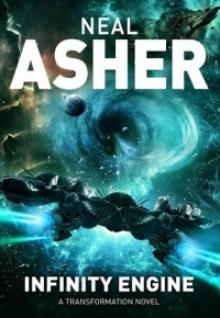 Infinity Engine
Infinity Engine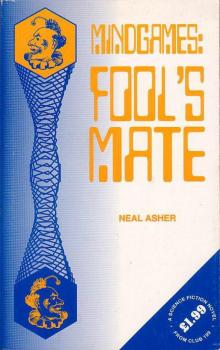 Mindgames: Fool's Mate
Mindgames: Fool's Mate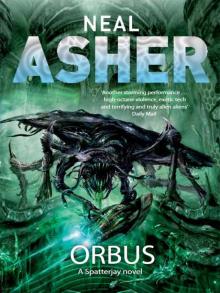 Orbus
Orbus Africa Zero
Africa Zero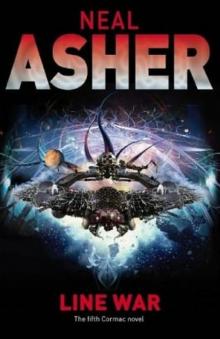 Line War ac-5
Line War ac-5 Brass Man
Brass Man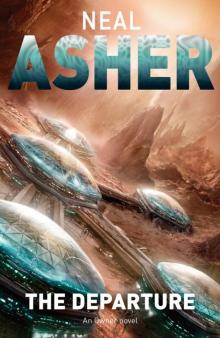 The Departure to-1
The Departure to-1 Cowl
Cowl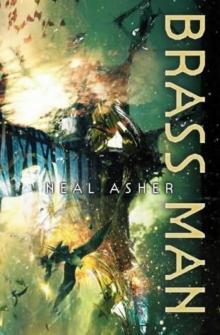 Brass Man ac-3
Brass Man ac-3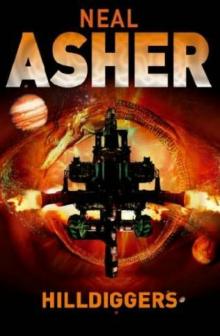 Hilldiggers (polity)
Hilldiggers (polity)![Greg Bear - [Eon Trilogy 1] - Eon (rescan) (v1.0) Read online](http://i1.bookreadfree.com/i2/04/08/greg_bear_-_eon_trilogy_1_-_eon_rescan_v1_0_preview.jpg) Greg Bear - [Eon Trilogy 1] - Eon (rescan) (v1.0)
Greg Bear - [Eon Trilogy 1] - Eon (rescan) (v1.0)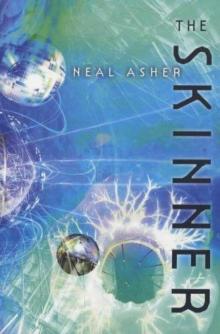 The Skinner s-1
The Skinner s-1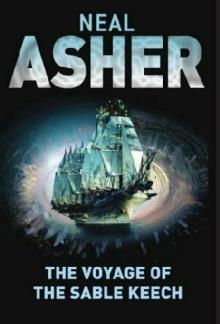 The Voyage of the Sable Keech s-2
The Voyage of the Sable Keech s-2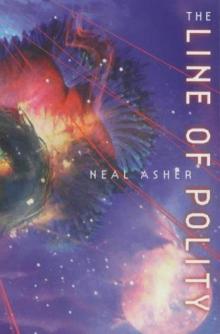 The Line of Polity ac-2
The Line of Polity ac-2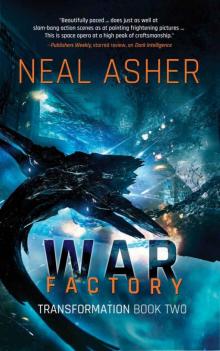 War Factory: Transformations Book Two
War Factory: Transformations Book Two Polity Agent ac-4
Polity Agent ac-4